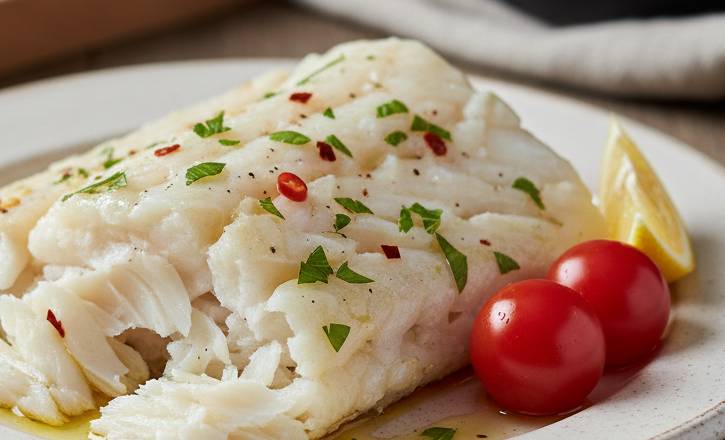
Baccalà, or dried salted cod, is a staple in many cuisines, but its hard, salty nature can be intimidating to cook. The secret to a truly great baccalà dish isn’t just about the recipe—it’s about preparing the fish itself. The goal is a perfect, soft texture that melts in your mouth, not a chewy, rubbery one. This guide will walk you through the essential steps to transform a rock-hard piece of fish into a culinary masterpiece.
The First and Most Crucial Step: Desalination
This is where the magic happens. Skipping or rushing this step is the most common mistake. You need to remove the excess salt without losing the flavor that makes baccalà special.
- Rinse Thoroughly: Start by rinsing the baccalà under cold running water for several minutes. This washes away the surface salt and any impurities.
- Soak in Cold Water: Place the rinsed baccalà in a large bowl and cover it completely with cold water. Make sure there’s plenty of space for the water to circulate.
- Change the Water Regularly: This is the most important part of the process. You must change the water every 6-8 hours. The salt from the fish leaches into the water, and if you don’t change it, the fish will simply reabsorb the salt. For a large piece of baccalà, this process can take anywhere from 24 to 72 hours, depending on how thick the fish is. A good rule of thumb is to soak it for at least 48 hours.
- Feel for Firmness: You’ll know it’s ready when the fish is pliable and much softer to the touch. The flesh should be firm but not rigid. You can also taste a tiny piece to check the salt level. It should still have a salty taste, but not overwhelmingly so.
Cooking for a Perfect, Soft Texture
Once your baccalà is properly desalted, you can cook it. The key here is gentle, low-temperature cooking. High heat will toughen the fibers and undo all your hard work.
- Poach, Don’t Boil: The best method for a soft texture is gentle poaching. Place the baccalà in a wide pot and cover it with cold water. You can add a few bay leaves, garlic cloves, or a slice of lemon to the water for extra flavor.
- Slow and Steady: Place the pot over medium-low heat. The water should never come to a rolling boil. You want a very gentle simmer, just a few small bubbles breaking the surface.
- Monitor the Temperature: The ideal temperature is around 180-190°F (82-88°C). A kitchen thermometer is a great tool here. If the water gets too hot, simply remove the pot from the heat for a minute or two until the temperature drops.
- Cook Until Flaky: Depending on the thickness, the baccalà will be cooked in about 15-20 minutes. You’ll know it’s done when the fish flakes easily with a fork. Don’t overcook it, or it will become mushy.
Conclusion: Patience is Your Best Ingredient
Cooking baccalà perfectly isn’t a quick process. It requires patience and attention to detail, especially during the desalination stage. But the reward is a perfect, soft texture that is miles away from the tough, overly salty versions you might have had before. Once you master this technique, you can use your beautifully prepared baccalà in a variety of dishes, from stews and salads to fritters and spreads.
Ready to give it a try? The first step is to get your hands on a good piece of dried salted cod. Happy cooking!
FAQ
Q: Can I desalinate baccalà in the refrigerator?
A: Yes, in fact, it’s recommended. Keeping the baccalà in the refrigerator while it soaks ensures the water stays cold and prevents the fish from spoiling.
Q: How do I know if my baccalà is desalted enough?
A: The best way is to taste a small piece. It should still have a hint of salt but not taste overwhelmingly salty. The fish should also be flexible and no longer rock-hard.
Q: Can I use hot water to speed up the process?
A: No. Using hot water will cook the outside of the fish and make it rubbery before the salt has a chance to leach out from the inside. Always use cold water.
Q: What if I forget to change the water?
A: If you forget to change the water for more than 12 hours, you’ll need to add a significant amount of time back to your soaking process. The fish will reabsorb the salt, and you’ll have to start a fresh cycle of water changes to get the salt level down again.
Q: Can I use the poaching liquid for my dish?
A: It’s generally not recommended. The poaching liquid will still contain some salt and flavors you might not want in your final dish. For the best result, use fresh liquid for your recipe.
Q: Can I freeze baccalà after it’s been desalted?
A: Yes, you can. After it’s properly desalted, pat the baccalà dry, wrap it tightly in plastic wrap or an airtight bag, and you can freeze it for up to two months.